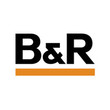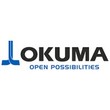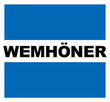Nearshoring to Poland and Other CEE Countries: A Strategic Move for European Businesses
In recent years, Poland has emerged as a key nearshoring destination for businesses across Europe. This trend, driven by various economic and geopolitical factors, is not only benefiting Poland but also extending its advantages to neighboring countries. This article explores the dynamics of nearshoring to Poland, the benefits for surrounding nations, and the role of organizations like CeeInd in facilitating this process. Additionally, we will examine how countries such as Germany, Sweden, Finland, Austria, Italy, and Switzerland are reaping the benefits of nearshoring to Poland and other Central and Eastern European (CEE) countries, focusing on specific industries such as machine tools, woodworking, automotive, food processing, and manufacturing.
Why CEE Is the Nearshoring Hotspot for Multinationals
The global business landscape is changing before our eyes. A series of shocks to the decades-old system of globalisation—first the pandemic, then the war in Ukraine and the geopolitical uncertainty that has followed in its wake—has revealed the inherent weakness in the previously touted efficiencies of just-in-time global supply lines.
Rising risks—and the perception that the underlying uncertainties behind these risks will continue—are forcing companies active in diverse industries and sectors to re-think their old supply-chain paradigms. Among the de-risking strategies increasingly deployed by global companies is to de-couple from their old supply chains in far-flung, previously low-cost locations like China and the Asia Pacific region and reposition their production capabilities closer to their final customers—a process known as “nearshoring.” Although this is only one of the de-risking strategies, it is a major trend in CEE among multinationals and our focus here.
Bringing supply chains closer to final consumers also fits the ESG agenda to reduce the embedded carbon footprint of final products and to establish more sustainable business models. In Europe, new and planned EU regulations are incentivising companies to bring the manufacturing of products destined to be sold in the EU back to Europe—everything from cars and machinery to clothing and consumer goods—while firms storing customer data or using certain types of complex technology will increasingly need to locate these operations within the EU for cyber security reasons.
A report on the results of a survey published by global consultancy EY in 2022 showed that the majority of companies participating were already taking or planning to take steps to de-couple existing supply chains and relocate them closer to consumers.
The Rise of Poland as a Nearshoring Hub
Poland’s strategic location at the heart of Europe, coupled with its strong economic performance, skilled workforce, and robust infrastructure, makes it an attractive nearshoring destination. Companies looking to mitigate risks associated with distant offshore locations and seeking to enhance operational efficiency are increasingly considering Poland for their business operations.
Key factors contributing to Poland's attractiveness include:
- Proximity to Western Europe: Shorter travel times and similar time zones facilitate smoother communication and collaboration.
- Highly Skilled Workforce: Poland boasts a large pool of well-educated professionals, particularly in IT, engineering, and manufacturing sectors.
- Cost-Effectiveness: While not as low-cost as traditional offshore destinations, Poland offers a competitive cost structure compared to Western Europe.
- Stable Economy: Poland's consistent economic growth and stable political environment provide a secure investment climate.
Beneficiaries Among Neighboring Countries
Poland’s rise as a nearshoring hub has positive spillover effects on its neighbors, particularly those in Central and Eastern Europe (CEE). Countries such as the Czech Republic, Slovakia, Hungary, and the Baltic states (Lithuania, Latvia, Estonia) are reaping benefits through increased regional economic activity and collaboration.
Examples of Nearshoring Benefits to Neighboring Countries:
-
Czech Republic: Often considered in tandem with Poland for nearshoring, the Czech Republic benefits from similar advantages, such as a skilled labor force and competitive costs. Its close proximity to Poland allows for seamless business operations across borders.
-
Slovakia: Slovakia's automotive and electronics industries have seen significant growth due to nearshoring. The country’s integration with Poland in supply chains enhances its appeal for multinational companies.
-
Hungary: With its strong emphasis on technological innovation and manufacturing, Hungary collaborates closely with Poland, offering complementary strengths that attract nearshoring investments.
-
Baltic States: Lithuania, Latvia, and Estonia benefit from their strategic location and advanced digital infrastructure. Their collaboration with Poland facilitates regional growth and provides businesses with a broader market and resource base.
Western European Beneficiaries
Western European countries are also significantly benefiting from nearshoring to Poland and other CEE countries. Notable examples include:
-
Germany: As Poland’s largest trading partner, Germany benefits immensely from nearshoring. German companies leverage Poland’s manufacturing capabilities, skilled workforce, and proximity to maintain high standards of quality and efficiency while reducing costs. Sectors such as automotive, machinery, and IT are particularly active in this regard.
Examples:
- Volkswagen: The automotive giant has substantial manufacturing operations in Poland, producing various models and components.
- Heidelberger Druckmaschinen: A leading manufacturer of printing presses, Heidelberger has invested in machine tool production in Poland.
- Bosch: Bosch has significant investments in Poland, focusing on automotive components and household appliances manufacturing.
-
Sweden and Finland: Scandinavian countries like Sweden and Finland find Poland and the Baltic states advantageous for nearshoring due to cultural similarities, advanced digital infrastructure, and geographical proximity. These countries are focusing on IT services, engineering, and green technologies, enhancing collaboration and innovation.
Examples:
- Sweden: Sandvik, a high-tech engineering group, has operations in Poland focusing on metal-cutting and mining tools.
- Sweden: IKEA has significant operations in Poland and the Baltic states, leveraging local manufacturing capabilities for its global supply chain.
- Finland: UPM-Kymmene, a leading company in the forestry industry, has invested in woodworking and paper manufacturing in Poland and the Baltic states.
- Finland: Fortum, a Finnish energy company, has invested in energy projects across the Baltic region and Poland, focusing on renewable energy and sustainability.
-
Austria: Austria’s economic ties with the CEE region are strong, and nearshoring to Poland and neighboring countries allows Austrian businesses to optimize their supply chains and improve cost efficiency. The manufacturing and logistics sectors in Austria benefit particularly from this regional integration.
Examples:
- OMV: An Austrian multinational integrated oil and gas company, OMV has investments in manufacturing facilities in the Czech Republic and Slovakia.
- Rosenbauer: A manufacturer of firefighting technology, Rosenbauer has established production operations in Poland.
- Egger Group: A major player in the woodworking industry, Egger has invested in manufacturing plants in Poland and Romania.
-
Italy: Italian companies in the fashion, design, and automotive sectors are increasingly nearshoring to Poland and Hungary. These CEE countries offer high-quality production capabilities and logistical advantages, which help Italian businesses maintain their competitive edge in global markets.
Examples:
- Fiat Chrysler Automobiles (FCA): With manufacturing plants in Poland and Hungary, FCA produces vehicles and automotive components.
- Lavazza: The Italian coffee giant has invested in food processing and packaging facilities in Poland.
- Brembo: A leader in high-performance brake systems, Brembo has established manufacturing operations in Poland.
-
Switzerland: Known for its high-tech industries and financial services, Switzerland benefits from nearshoring by tapping into the skilled labor force and innovative capabilities of Poland and the Czech Republic. Swiss companies leverage these advantages to enhance their operational efficiency and drive growth.
Examples:
- ABB: A Swiss multinational corporation, ABB has established manufacturing and R&D facilities in Poland, focusing on automation and robotics.
- Nestlé: The global food and beverage leader has significant operations in Poland, including food processing and packaging plants.
- Georg Fischer: A Swiss leader in manufacturing technology, Georg Fischer has invested in machine tools and manufacturing operations in Poland.
Scandinavian Focus on Baltic Countries and Poland
Scandinavian countries have a particular focus on nearshoring to the Baltic countries (Lithuania, Latvia, Estonia) and Poland due to their cultural similarities, advanced digital infrastructure, and geographical proximity. This strategic focus enhances regional collaboration and innovation.
Examples:
- Sweden: IKEA has significant operations in Poland and the Baltic states, leveraging local manufacturing capabilities for its global supply chain.
- Finland: Fortum, a Finnish energy company, has invested in energy projects across the Baltic region and Poland, focusing on renewable energy and sustainability.
Southern CEE Focus by Italy and Austria
Italy and Austria are investing more into the southern CEE states like Slovenia, Croatia, and up to the Czech Republic. These investments are driven by the region’s strategic location, skilled workforce, and emerging markets.
Examples:
- Italy: Eni, an Italian multinational oil and gas company, has invested in energy projects in Croatia and Slovenia.
- Austria: Erste Group, an Austrian financial services provider, has expanded its banking operations in the Czech Republic and Croatia, supporting regional economic growth.
- Fundermax: An Austrian company specializing in high-pressure laminates, has invested in manufacturing plants in Slovenia.
The Role of CeeInd in Nearshoring
Organizations like CeeInd with their Central and Eastern European Industry Development Network play a crucial role in promoting nearshoring to Poland and its neighboring countries. CeeInd assists businesses in navigating the complexities of establishing operations in the CEE region by offering services such as:
- Business Partner Search: CeeInd helps companies find reliable local partners, which is critical for successful nearshoring. Their extensive network ensures businesses connect with partners that meet their specific needs and standards.
- Investment Facilitation: By providing detailed market analyses, investment incentives, and regulatory guidance, CeeInd supports companies in making informed investment decisions.
- Market Entry Strategies: CeeInd offers tailored strategies for market entry, ensuring businesses can efficiently set up and scale their operations in Poland and surrounding countries.
Future Developments in Nearshoring
As nearshoring to Poland and other CEE countries gains momentum, several future developments are anticipated:
- Digital Transformation: Increased investment in digital infrastructure and Industry 4.0 technologies will enhance manufacturing capabilities and operational efficiency in the CEE region.
- Sustainable Practices: Emphasis on green technologies and sustainable practices will attract environmentally conscious businesses to nearshore their operations to Poland and its neighbors.
- Workforce Development: Continued investment in education and vocational training will ensure a steady supply of skilled labor to meet the demands of nearshoring industries.
- Infrastructure Expansion: Upgrades to transportation and logistics infrastructure will facilitate smoother cross-border operations and enhance regional connectivity.
Conclusion
Nearshoring to Poland presents a strategic opportunity for European businesses to enhance their operational efficiency, reduce costs, and mitigate risks. The positive impact of this trend extends beyond Poland, benefiting neighboring countries and fostering regional economic integration. Western European nations such as Germany, Sweden, Finland, Austria, Italy, and Switzerland are also capitalizing on the advantages of nearshoring to Poland and other CEE countries. Scandinavian countries focus particularly on the Baltic states and Poland, while Italy and Austria are investing heavily in southern CEE states like Slovenia, Croatia, and the Czech Republic. Organizations like CeeInd are pivotal in facilitating this process, providing the necessary support for businesses to successfully establish and grow their operations in Central and Eastern Europe. As nearshoring continues to gain momentum, Poland and its neighbors are well-positioned to become the new powerhouses of European industry.
Why CEE Is the Nearshoring Hotspot for Multinationals
The business-smart fundamentals that have made CEE a hotspot for investment over the last decades have only strengthened over time. Strategic location, an educated and cost-competitive workforce, excellent infrastructure (which has improved significantly over the last decade), a long industrial tradition, a favorable business environment, and lower operating costs than Western Europe make nearshoring European activities to CEE a winning proposition. As most CEE countries are EU member states, setting up operations there allows for the borderless flow of goods within the EU’s Single Market.
In addition to location and cost-effectiveness, access to skilled labor is seen as essential for nearshoring manufacturers. In CEE, almost a quarter (24%) of graduates have degrees in one of the STEM (science, technology, engineering, and mathematics) disciplines that are vital for high-tech manufacturing. This is the same percentage as in the EU-27, but CEE labor costs are one-third compared to Western European countries thanks to the region’s lower cost of living. Labor costs in some CEE countries are now competitive with China. Another benefit is ease of communication. With English seen as the main language of tech and commerce, the CEE scores highly. In an index of English-language proficiency, CEE countries (except Serbia, where data is not available) ranked higher than France, Italy, and Spain.
The CEE region proudly boasts a buoyant manufacturing sector stretching back to the Habsburg Empire. Today, six out of seven CEE countries are among the top 10 countries in Europe with the highest share of jobs in manufacturing. Budapest, Prague, and Bratislava are among the highest-scoring cities for high-tech jobs, including high-tech manufacturing. In 2021 the region exported over €370 billion in machinery and transport, close to a fifth (19%) of the EU-27 total—growing from 14% in 2011.
Another factor helping to drive CEE’s success as a nearshoring hub is also the massive investment in and expansion of its infrastructure, both internally and its connections to Western Europe and global markets. For example, since 2000 the length of motorways in CEE has almost tripled, increasing by 271%, compared to only 16% for Western Europe. Hungary currently has one of the highest motorway densities in Europe, ranking third after Belgium and the Netherlands, while the Czech Republic has one of the highest rail network densities. This has led to a massive expansion of consumer market catchment areas. For example, Iłowa in Poland, located near the German border, has access to 21.1 million consumers within a five-hour drive.
In terms of economic performance, CEE is predicted to continue to outperform Western Europe and the rest of the EU, with GDP forecast to grow at double the eurozone average between 2023 and 2026. With a multitude of factors set to keep driving the nearshoring boom in CEE, demand for high-quality industrial and logistics space can only accelerate.
Are You Nearshoring? If So, Why?
Although we’ve had a presence in CEE for a long time, we are basing more of our operations closer to European markets. One reason for this is to reduce risk in our global supply chain, but our customers are driving it, too. They increasingly want to see that we have capacity and operational capabilities in Europe to support their businesses. Our clients’ ESG requirements are also rightly more important. They are looking at their supply chains and saying “part of reducing our carbon footprint means having our suppliers closer to our main markets”. They want their suppliers to produce more locally, and this is a trend that will continue.
Why is CEE a Popular Region for Nearshoring?
Being close to major Western European markets and the region’s skilled but competitively priced labor are key reasons. But there are many others, including the stability of locating within the EU – which most CEE nations are part of. The EU is also putting more pressure on major industries to manufacture goods destined for Europe within the EU. Certain products and services are also increasingly required to be made or housed in Europe for cyber security reasons, driving demand from electronics businesses and companies storing data.
Key Investments and Future Prospects
The CEE region is emerging as a principal destination for multinationals to nearshore their supply chains for the European market. This trend is expected to continue for the foreseeable future, as the strategy of de-coupling and re-establishing supply lines with new facilities takes time to implement. From market experience, the emergence of this trend in CEE is seen as “the tip of the iceberg,” as global business focuses on de-risking European supply lines with new, state-of-the-art facilities in the region.
Examples of Major Investments:
-
LG Energy Solution: In 2022, South Korean company LG Energy Solution announced plans to expand its lithium-ion battery factory in Poland—launched in 2016 as Europe’s first and largest plant for the production of batteries for electric cars. The company plans to increase output from 70GWh production capacity in 2022 to 115GWh by 2025. The €1 billion investment received €95 million in state aid from the Polish government.
-
Hyundai: Hyundai has opened a new polypropylene plant in the city of Szczecin, Poland, as part of its strategic expansion in Europe.
-
TRUMPF Huettinger: At CTPark Warsaw East, TRUMPF Huettinger, a leading German company specializing in the design and production of advanced industrial electronics, recently opened its seventh building in the Warsaw area, leasing an additional 25,500 sqm of production and warehouse space.
-
TitanX Engine Cooling: TitanX, a global supplier of cooling systems for vehicles, ramped up its production and distribution capacity at CTPark Opole in Poland, taking a further 27,000 sqm of space.
-
Bosch: In Serbia, Bosch took delivery of a 20,000 sqm built-to-suit facility at CTPark Belgrade West to produce motors for electronic window lifters.
-
Nidec: CTP also handed over a 26,500 sqm build-to-suit property to Japanese electromotors giant Nidec at CTPark Novi Sad in Serbia’s second-largest city.
With a multitude of factors set to keep driving the nearshoring boom in CEE, demand for high-quality industrial and logistics space can only accelerate. The business-smart fundamentals, strategic location, skilled workforce, and competitive costs make CEE a compelling choice for nearshoring.
Organizations like CeeInd are crucial in facilitating this process, providing necessary support for businesses to successfully establish and grow their operations in Central and Eastern Europe. As nearshoring continues to gain momentum, Poland and its neighbors are well-positioned to become the new powerhouses of European industry.













































